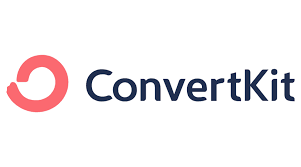In the bustling world of online marketing, landing pages stand as the frontliners in converting casual browsers into committed customers. With the right tool, you can craft pages that not only catch the eye but also capture the heart. Today, we’re diving into a comparison between two giants in the landing page arena: Landingi and ConvertKit. Both platforms promise to streamline your marketing efforts, but which one truly deserves a spot in your digital toolkit? Let’s explore.
| Landingi | ConvertKit Landing Pages |
|---|---|
 |  |
| G2 Score – 4.5 out of 5 stars | G2 Score – 4.4 out of 5 stars |
| TrustRadius Score – 9.8/10 | TrustRadius Score – 8.8/10 |
The Battle of Ease of Use and Flexibility
When it comes to choosing a landing page tool, the ease of use and flexibility are like the bread and butter of your decision-making process. You want something that’s straightforward enough to not require a PhD in coding, yet flexible enough to let your creative flags fly high. Let’s see how Landingi and ConvertKit stack up in this department.
Landingi: The Creative Playground
Landingi bills itself as the go-to platform for those looking to create landing pages without touching a single line of code. And they’re not just blowing smoke. Right from the get-go, Landingi impresses with its drag-and-drop editor. It’s intuitive, making you feel like a kid in a candy store, but for digital marketing. You can pick any element—be it text, images, or forms—and place it exactly where you want it on your page. It’s that simple.
But simplicity doesn’t mean compromise. Landingi offers a vast library of over 200 templates, each designed with conversion in mind. Whether you’re in the e-commerce space or hosting a webinar, there’s a template ready to be tailored to your needs. And if you’re feeling particularly adventurous, you can start from scratch and let your imagination run wild.
Flexibility is another of Landingi’s strengths. The platform allows for A/B testing, enabling you to pit two versions of your page against each other to see which performs better. This feature is invaluable for refining your message and design to perfection. Moreover, Landingi’s integrations with tools like Mailchimp, HubSpot, and Salesforce ensure that your landing page can easily fit into your existing marketing ecosystem.
ConvertKit: Simplified Sophistication
ConvertKit approaches landing pages with a slightly different philosophy. It’s designed with creators in mind—bloggers, podcasters, and YouTubers who might not have the time or inclination to delve deep into page design. ConvertKit’s editor is clean and uncomplicated, emphasizing content over flashy design. This focus makes it incredibly easy to get a landing page up and running in minutes.
What stands out about ConvertKit is its emphasis on email marketing integration. The platform doesn’t just let you build landing pages; it ensures these pages are seamlessly integrated into your email marketing campaigns. This integration is a boon for creators looking to build their audience through newsletters, email courses, or drip campaigns. ConvertKit’s forms and landing pages work hand in hand to capture leads and funnel them directly into your email list, making the follow-up process as smooth as peanut butter.
However, when it comes to design flexibility and the sheer number of templates, ConvertKit might not hold up as strongly as Landingi. The templates are beautiful but limited in number, and while the editor is easy to use, it doesn’t offer as much freedom for intricate customizations. That said, for many creators, this simplicity is not a bug; it’s a feature. It allows them to focus on content and audience engagement without getting bogged down by design choices.
Which One Takes the Cake?
Both Landingi and ConvertKit shine in the ease of use and flexibility category, but they cater to slightly different audiences. Landingi is the go-to for those who crave design freedom and customization, offering a broad canvas to paint your digital dreams. On the other hand, ConvertKit serves creators who prioritize content and wish to integrate their landing pages with robust email marketing efforts seamlessly.
In this round, your choice boils down to what matters most to you: design flexibility and variety or content-focused simplicity and email integration. Both platforms have their merits, and the best fit depends on your specific needs and goals.
Pricing and Value for Money
When it comes to selecting the right landing page tool, pricing plays a pivotal role. After all, we all want the most bang for our buck. Let’s delve into how Landingi and ConvertKit stack up against each other in terms of pricing structures and the value they offer for the investment.
| Landingi | Landingi’s pricing starts at $29 per month (billed annually) for the Core plan, which includes basic landing page features and a few integrations. Higher tiers offer more features, A/B testing, additional integrations, and subaccounts, with plans available up to $109 per month for agencies and large businesses, plus custom enterprise solutions. |
| ConvertKit Landing Pages | ConvertKit allows users to create landing pages for free, aiming at helping creators grow their audience without initial investment. For more advanced automation, integration, and support features, their pricing starts at $9 per month for the Creator plan when billed annually. |
Landingi: Customizable Plans for Every Budget
Landingi doesn’t adopt a one-size-fits-all approach to pricing. Instead, it offers a variety of plans designed to fit different needs and budgets. From basic packages for small businesses and solopreneurs to more advanced options for agencies and large enterprises, Landingi has something for everyone.
The entry-level plan starts at a competitive price point, making Landingi accessible to those just starting out or working with a tight budget. As you move up the tiers, the features become increasingly robust, including more landing pages, higher visitor limits, additional custom domains, and advanced integrations. Notably, all plans come with access to the full template library, A/B testing capabilities, and email support, ensuring that even the most budget-conscious users can create effective landing pages.
Landingi also offers a unique proposition for agencies with its white-label solution, allowing for the creation of landing pages under your brand. This feature is a game-changer for marketing professionals looking to provide added value to their clients without investing in software development.
ConvertKit: Creator-Focused Pricing
ConvertKit takes a different approach to pricing. It’s designed with creators in mind, and this is reflected in its pricing structure. The platform offers a free plan with basic features, which is perfect for new creators looking to build an audience without upfront investment. This free tier includes access to landing pages, forms, and a limited number of email sends, making it an attractive option for those just getting their feet wet.
As you scale up, ConvertKit’s paid plans introduce more sophisticated features like automated funnels and sequences, premium support, and advanced reporting. These features are tailored to creators who are ready to take their audience engagement to the next level. ConvertKit’s pricing is based on the number of subscribers, which means that as your audience grows, so does your investment in the platform. This model aligns the platform’s costs with your success, ensuring that you only pay more when you’re seeing more engagement and growth.
Value for Money: Landingi vs. ConvertKit
When comparing the value for money between Landingi and ConvertKit, it’s essential to consider your primary needs. Landingi offers more flexibility and control over the design and functionality of your landing pages, making it a solid choice for businesses and marketers focused on creating high-converting pages. The variety of pricing plans ensures that you can access powerful features without breaking the bank, and the agency features provide excellent value for marketing professionals.
On the other hand, ConvertKit excels in its integration of landing pages with email marketing, offering a streamlined solution for creators looking to grow their audience. The free plan is particularly appealing for those starting out, providing essential tools at no cost. As your needs evolve, ConvertKit’s pricing scales with your success, ensuring that the platform continues to provide value as you grow.
Ultimately, the choice between Landingi and ConvertKit comes down to your specific needs. If design flexibility and a wide range of features are your priority, Landingi might offer better value for your investment. However, if you’re a creator focused on building and engaging an audience through email, ConvertKit’s pricing model and integrated features may provide the value you’re looking for.
Integration and Compatibility
In today’s digital ecosystem, the ability of a platform to play nicely with other tools in your marketing stack is crucial. A landing page tool might be powerful on its own, but if it can’t integrate seamlessly with your CRM, email marketing platform, analytics tools, and others, its utility could be significantly diminished. Let’s explore how Landingi and ConvertKit fare in terms of integration and compatibility with other software.
Landingi: A Hub of Connectivity
Landingi takes integration seriously, understanding that a landing page is often just one component of a broader marketing strategy. To this end, the platform offers an impressive array of integrations with popular services across various categories, including email marketing, CRM, social media, analytics, and payment gateways.
With Landingi, you can connect your landing pages directly to tools like Mailchimp, HubSpot, Salesforce, and more, ensuring that lead data flows smoothly from your landing pages into your CRM or email marketing service. This connectivity extends to analytics and tracking, with support for Google Analytics, Facebook Pixel, and Google Tag Manager, enabling detailed tracking of conversions and user behavior.
Moreover, Landingi’s integration with payment gateways like PayPal and Stripe opens up possibilities for e-commerce businesses to create landing pages that directly contribute to the sales process, turning leads into transactions seamlessly.
ConvertKit: Streamlined for Creators
ConvertKit, with its creator-focused ethos, prioritizes integrations that support audience growth and engagement. While it might not offer the broad range of connections available in Landingi, it provides deep integration with services that matter most to bloggers, podcasters, and other content creators.
At the heart of ConvertKit’s integration strategy is its seamless connection with email marketing and audience management. The platform allows for easy integration with WordPress, Shopify, and WooCommerce, making it a breeze to capture leads from your landing pages and funnel them directly into your email list or e-commerce store.
ConvertKit also integrates with tools like Zapier, enabling connections to hundreds of other apps and services, even if direct integration isn’t available. This means you can automate workflows between ConvertKit and nearly any other tool you use, albeit with a bit more setup than direct integrations require.
Weighing Integration Capabilities
The integration capabilities of Landingi and ConvertKit highlight the different focuses of the two platforms. Landingi offers a wide-ranging suite of integrations that cater to businesses looking to create high-converting landing pages that fit seamlessly into their existing marketing and sales ecosystems. Its compatibility with a broad spectrum of tools makes it a versatile option for marketers who rely on a diverse toolkit.
ConvertKit, meanwhile, zeroes in on the needs of individual creators and small businesses, offering integrations that streamline the process of growing and managing an audience. While it may not have the same breadth of direct integrations as Landingi, its focus on crucial services and the ability to connect with hundreds of apps via Zapier ensures that creators can maintain a lean and efficient workflow.
In conclusion, your choice between Landingi and ConvertKit might come down to the complexity of your marketing stack and where your priorities lie. If you require a landing page platform that integrates with a wide variety of marketing and sales tools, Landingi could be the better choice. However, if you’re a creator or small business focused on audience growth and engagement, ConvertKit’s targeted integration capabilities might offer exactly what you need.

Related: Check out our free SEO suite

Customer Support and Resources
No matter how intuitive a platform might be, there will always be moments when you need a helping hand. Whether it’s a technical glitch, a billing query, or just a how-to question, the quality of customer support can significantly impact your experience. Beyond support, the availability of resources like tutorials, forums, and documentation plays a vital role in enabling users to make the most out of a platform. Let’s compare the customer support and resources offered by Landingi and ConvertKit to see which one ensures you’re never left in the dark.
Landingi: Comprehensive Support at Every Step
Landingi takes customer support seriously, offering multiple channels to get the assistance you need. Users can reach out through email support, which is available for all plans, and expect timely responses to their queries. For more immediate assistance, Landingi offers chat support, ensuring that help is just a message away during business hours.
But Landingi’s commitment to supporting its users extends beyond direct assistance. The platform boasts an extensive knowledge base filled with articles, guides, and video tutorials. These resources are designed to help users navigate the platform, offering step-by-step instructions on everything from creating your first landing page to integrating with third-party services. This self-help approach empowers users to find answers at their own pace and learn new tricks to enhance their landing pages.
Furthermore, Landingi offers additional educational resources, including webinars and a blog filled with marketing tips and best practices. These resources are not only valuable for mastering Landingi but also for broadening your overall digital marketing skills.
ConvertKit: Tailored Support for Creators
ConvertKit’s approach to customer support reflects its focus on serving creators. The platform offers email support across all its plans, with a reputation for being responsive and helpful. For more direct interaction, ConvertKit provides live chat support, ensuring that users can quickly resolve any issues that arise.
In addition to its responsive support team, ConvertKit offers a wealth of educational content designed to help creators grow their audience and engage with their subscribers more effectively. The ConvertKit knowledge base is stocked with articles and tutorials covering a wide range of topics, from the basics of setting up your account to advanced automation strategies.
ConvertKit also stands out for its community support. The platform hosts a vibrant community of creators, where users can exchange tips, share experiences, and offer advice to one another. This sense of community is a valuable resource in itself, providing both inspiration and practical advice from peers who are navigating similar challenges.
Evaluating Support and Resources
Both Landingi and ConvertKit excel in providing their users with robust support and a rich array of resources to help them succeed. Landingi’s comprehensive approach ensures that users of all levels can get the support they need, whether they prefer self-guided learning or direct assistance. Its educational content and webinars are especially beneficial for users looking to deepen their marketing knowledge.
ConvertKit, on the other hand, tailors its support and resources to the specific needs of creators. Its responsive support team, combined with an extensive knowledge base and an active community, creates a supportive environment that encourages growth and engagement.
Ultimately, the choice between Landingi and ConvertKit may come down to the type of support and resources you value most. If you prefer a wide range of learning materials and direct support options, Landingi might be more up your alley. However, if you’re a creator looking for a platform that offers both practical support and a sense of community, ConvertKit could be the better fit for you.
Analytics and Reporting
The ability to track the performance of your landing pages is crucial for optimizing conversion rates and understanding your audience better. Analytics and reporting features enable you to see how visitors interact with your pages, which campaigns are driving traffic, and what elements are most effective in converting leads. Let’s compare the analytics and reporting capabilities of Landingi and ConvertKit to determine which platform gives you the insights you need to make data-driven decisions.
Landingi: In-depth Insights for Optimization
Landingi provides robust analytics and reporting features that allow marketers to dive deep into the performance of their landing pages. The platform integrates seamlessly with Google Analytics and Facebook Pixel, enabling users to track visitor behavior and campaign effectiveness with precision. This integration is critical for marketers who rely on detailed data to refine their strategies.
Beyond basic traffic metrics, Landingi offers built-in A/B testing tools, making it easy to compare different versions of a landing page to see which performs better. This feature is invaluable for optimizing conversion rates, as it allows you to test various elements such as headlines, call-to-action buttons, and images to determine what resonates most with your audience.
Landingi’s analytics dashboard provides a clear overview of key performance indicators (KPIs), such as conversion rates, visitor count, and actions taken on the page. This data is presented in an easy-to-understand format, making it accessible for users of all skill levels to interpret and act on the insights provided.
ConvertKit: Focused Analytics for Creators
ConvertKit, with its creator-centric approach, offers analytics features designed to help users grow and engage their audience. The platform focuses on metrics that matter most to creators, such as subscriber growth, email open rates, and click-through rates. While ConvertKit’s analytics might not delve as deeply into page-specific performance as Landingi, they provide crucial insights into the overall effectiveness of your landing pages and email campaigns.
One of ConvertKit’s strengths lies in its ability to track the conversion path of subscribers. This means you can see not just how many people signed up on a particular landing page, but also how they interact with your emails afterward. This holistic view of the subscriber journey is especially useful for creators focused on building a long-term relationship with their audience.
ConvertKit also offers reporting features that make it easy to segment your audience based on their behavior, such as which links they clicked or which emails they opened. This level of insight allows for more targeted and effective email campaigns, ultimately leading to higher engagement and conversion rates.
Choosing the Right Tool for Analytics and Reporting
When it comes to analytics and reporting, Landingi and ConvertKit cater to slightly different needs. Landingi’s comprehensive integration with Google Analytics and Facebook Pixel, combined with its in-built A/B testing tools, make it a powerful option for marketers who need detailed insights into page performance and visitor behavior. Its analytics are geared towards optimizing landing pages for higher conversion rates.
ConvertKit, on the other hand, offers analytics that are more focused on subscriber growth and engagement. Its ability to track the subscriber journey from sign-up through email interaction provides valuable insights for creators looking to build a loyal audience. ConvertKit’s reporting features support the creation of highly targeted email campaigns, making it a strong choice for those whose primary goal is audience engagement.
Ultimately, the best choice between Landingi and ConvertKit for analytics and reporting depends on your specific goals. If your focus is on fine-tuning landing pages for optimal performance, Landingi might be the better fit. If you’re more concerned with understanding and engaging your audience through email, ConvertKit’s focused analytics could provide the insights you need.
Mobile Responsiveness and Design Flexibility
In an era where a significant portion of web traffic comes from mobile devices, the importance of creating mobile-responsive landing pages cannot be overstated. A landing page that looks great on a desktop but falls apart on a smartphone can significantly harm your conversion rates. Additionally, the flexibility to design unique and visually appealing pages that stand out can make all the difference in capturing your audience’s attention. Let’s delve into how Landingi and ConvertKit address mobile responsiveness and design flexibility.
Landingi: Prioritizing Design and Mobile Experience
Landingi excels in offering users a high degree of design flexibility while ensuring that pages are mobile-responsive by default. The platform’s drag-and-drop editor allows for precise control over the layout and appearance of landing pages, with the ability to adjust elements specifically for mobile viewing. This dual-view editing ensures that your pages look as intended on any device, providing a seamless user experience.
With Landingi, the emphasis on design does not stop at flexibility. The platform offers a wide array of professionally designed templates that are not only aesthetically pleasing but also optimized for conversion. These templates cover various industries and purposes, from e-commerce to event registrations, and can be easily customized to match your brand identity.
Moreover, Landingi’s design capabilities extend to advanced features like parallax scrolling, animation effects, and custom CSS/HTML editing for users who have the technical know-how and wish to push the boundaries of their landing page designs. These features provide the tools necessary to create truly unique and engaging landing pages that can stand out in a crowded digital landscape.
ConvertKit: Streamlining Design for Creators
ConvertKit approaches design and mobile responsiveness with its creator audience in mind, focusing on simplicity and effectiveness. The platform ensures that all landing page templates are automatically mobile-responsive, relieving users of the need to manually adjust designs for different devices. This approach is in line with ConvertKit’s overall philosophy of keeping things straightforward and user-friendly, allowing creators to focus more on content and less on technicalities.
While ConvertKit’s design options might not offer the same level of flexibility as Landingi, the available templates are crafted to be visually appealing and effective for conversion. The templates are designed to highlight content—such as lead magnets, course sign-ups, or newsletter subscriptions—with clear calls-to-action that are easily accessible on any device.
ConvertKit also allows for some customization, enabling creators to add their branding and adjust basic design elements to align with their visual identity. While advanced design features may be limited, the platform’s simplicity ensures that every user can create professional-looking, mobile-responsive landing pages without requiring design or technical expertise.
Making the Choice for Mobile and Design Needs
The contrast between Landingi and ConvertKit in terms of mobile responsiveness and design flexibility reflects their differing target audiences. Landingi provides a powerful solution for businesses and marketers who need complete control over their landing page design, with a strong emphasis on creativity, customization, and mobile optimization. Its suite of design features and mobile-responsive templates caters to those who prioritize distinctive and high-converting landing pages.
ConvertKit, on the other hand, offers a streamlined design process that automatically ensures mobile responsiveness, making it ideal for creators and small businesses looking for efficiency and simplicity. The focus on content and conversion over complex design options means ConvertKit is well-suited to users who want to create effective landing pages quickly and without fuss.
Your choice between Landingi and ConvertKit should be guided by your specific needs in mobile responsiveness and design flexibility. If you value design innovation and customization capability, Landingi might be the more suitable option. However, if simplicity and efficiency in creating mobile-optimized pages that effectively convert are your top priorities, ConvertKit could better serve your needs.
Conclusion
Choosing between Landingi and ConvertKit for your landing page needs hinges on understanding your priorities. Landingi stands out with its robust design flexibility, extensive template library, and comprehensive integration capabilities, making it ideal for businesses and marketers focused on creating highly customized, high-converting landing pages. Its detailed analytics and A/B testing features are a boon for data-driven optimization. On the flip side, ConvertKit shines in simplicity and efficiency, particularly for creators and small businesses aiming to grow and engage their audience. Its streamlined analytics, focused on key performance metrics, and its strong email marketing integration offer a cohesive solution for audience management.
Ultimately, if your goal is to craft detailed, highly tailored landing pages within a diverse marketing ecosystem, Landingi is your go-to. But if you’re a creator or small business looking for an easy-to-use platform that combines landing page creation with powerful email marketing tools, ConvertKit is the better fit. Both platforms excel in their respective areas, ensuring that whatever your needs, you have a solid option to support your online marketing strategies.
Read Next:
- Crafting a Mobile App Development Agreement: An International Perspective
- Data Processing Agreement: An International Perspective
- Original Equipment Manufacturing Agreements: All You Need to Know
- Demystifying End-User License Agreements (EULA): What You Need to Know
- 31+ Top Social Media Management tools Compared! (2023)





















Comments are closed.